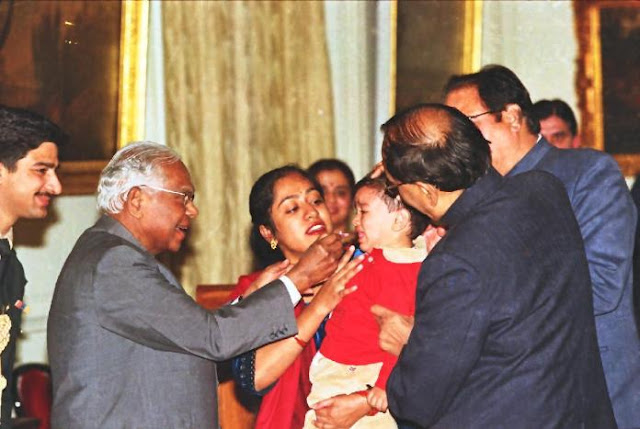Lecture: Disease Control and Immunization: A Sociological Enquiry, Veena Das
Keywords: Disease Control, Heath Policy, Immunization, Policy Research, Sociology of Health and Medicine, Veena Das
University of Delhi
Bachelor of Arts
Sociology of Health and Medicine
Reading to be covered: Das, Veena, R. K. Das, and Lester Coutinho, 2000, Disease Control and Immunization: A Sociological Enquiry, in, Economic and Political Weekly, February 19-26, Pages 625-632
Course Structure
Important points to be kept in mind while studying the article
Expected outcome
Lecture in detail with comment and clarification
Introduction
A Lab Test of the Vaccine
Global Programming, National Sovereignty, and Childhood Immunization
Recording as Political Documents
Crisis, Epidemics and Health Management
Experimental Dimension
Women Fertility and Scientific Controversies
Medicine trail
Important Points to be Kept in Mind, While Study the Article/ Study Material
How public health system is operating in the society. What is the relation between the ground social reality and the scientific and bureaucratic operation is working? Also, pay attention that many medicines which were developed in the western countries are tested in the third world countries like Asia and Africa in which India is included.
Expected Outcome
In the end, students will be able to understand the operation of the public health programme especially immunization programme.
Introduction
This article is about to understand the process through which immunization comes to be institutionalized as a routine practice in public health management. This article provides relevant information for public health policy research and management in India. It addresses both the immunization process in the colonial era and the after independence.
The article is searching the social science perspective in the process of immunization to the public by the state, and the role of the global player in this process.
From the historical perspective, the immunization against smallpox as part of the public health programme under both the colonial regime and some of the princely state has a long history in Indian.
Even before the discovery of Jenner Variolisation was knows and practices selectively in India and China, since the seventeenth century.
There was a rule during the colonial period many acts was controlling these like – Compulsory Vaccination Act, Cantonment Act, Epidemic Diseases Act- through which the body was sought to be colonized, to use the felicitous phases of David Arnold, who pioneered the study of colonial medicine from a subaltern perspective.
To prevent the spaded the disease the state had promoted the hygienist theory and practice to one in which disease-prone areas were subjected to surveillance and compulsory immunization.
But the native population also shows a differentiated response that ranges from resistance response that ranges from resistance to vaccination to proactive demand for it.
Many bureaucratic records speak about ‘panic’ on the part of the native population in the midst of epidemics, and hence construct the public opinion in terms of maintaining public order, the response of the communities was.
There was also a local idea of prevention therapeutics and care, which were no attention in the bureaucratic rendering of so-called native response to epidemics.
A Lab Test of the Vaccine
For the authors, the second part of the story of vaccine is that the first laboratory produces vaccine against Vibrio Cholerae was produces in the laboratories of Pasteur in Paris by Haffkine but was tested in India in 1893. However, the British government n did not wish to be seen as opposing scientific research in the eyes of other European nations, especially France and Germany, so it did not also wish to provoke ‘native rebellions’.
DEAR STUDENTS, please pay here attention that the vaccine was developed in France but it was tested in India. This is happening in most cases. The developed countries are used to test their medicine in the third world. Sometimes legally and most of the times are illegal.
Global Programming, National Sovereignty, and Childhood Immunization
After independence, the Bhore Committee was set up to consider the ways and means of reaching health to the ways and means of reaching health to the large segments of underfed populations. It was estimated that only 3.6 per cent of the population has been covered by smallpox vaccination.
There was an important policy shift after 1985 when the Universal Immunization Programme (UIP) was adopted disease that was vaccine-preventable.
Instead of thinking of immunization as a strategy to protest populations at risk from epidemics, the childhood immunization programme out to make immunization a routine practice for prevention of vaccinating preventable disease, viz, childhood tuberculosis, diphtheria, whooping cough, tetanus, and polio in the first instance, and then measles, which is added in the immunization schedule in 1985.
There is a Positive Result of the Child Immunization in India.
Data collected by the Das and Dasgupta has shown that all infants were not immunized by the state as per the target. However, they also accepted that there is maybe an error in data calculation.
Recording as Political Documents
Authors are saying that the emphasis on disease eradication and universalize coverage of children as part of a new strategy of resource mobilization within international organizations.
Authors are trying to say that in the first paragraph that there was big international politics behind the immunization but for me (Anil) they fail to prove that (in a negative way) as it was conceptualized here are earlier. The authors are only somehow success to prove that only 80% of children were immunized and the remaining 20% are deifying the purpose of the vaccination. Authors are saying that only Kerala and Gujarat did well for vaccination and the rest of the country did not implement it well. However authors, again and again, accepting that there is maybe an error in data calculation. However, this is a matter of common sense that all children were not covered by the immunization.
The authors are also emphasized that sometimes the local ANMs were not able to identify and recognize the vaccine of venerable diseases. These things happen during a local level epidemic, where immunization sessions are held.
Social features, which affect accessibility, are social isolation of certain sections of hamlets within the village because as well as within tribal communities.
Further, the taboos on women to appear in a public place during pregnancy coupled with demands on female labour both within and outside the household make it difficult for the mother to take the child for immunization.
The pregnant women faced a lot of difficulties especially those who live in a nuclear family, where the other women are not available to tack care and help the pregnant women.
However, there is a sharp difference in demand for and acceptances of vaccination between communities with have a thin layer of educated women versus those which may have literate women, but not educated once in the community.
The Anganwadi Worker played a good role to announce and gather the children and pregnant women for vaccination. They did well in again in the Kerala and Gujrat.
Later on, public health becomes more critical after a significant increase in the incidence of HIV transmission.
Crisis, Epidemics and Health Management
Authors are emphasizing on that there are laps in the implementation of the government programme geared toward the child and maternal health in several states in India and authors have blamed on media that they are not getting the attention.
These bad situations are not putting the question on the legitimacy on the government beaus this is the public culture that poor does not matters for the government except during the vote, for the example cholera outbreak in 1993 and 1994 and dengue outback in 1996. The government first tried to deny the situation; even they did not accept the dangers of the situation until the end of the epidemic.
The government of Indian and local government did not pay the attention even that was much reported in the international media e.g. pelage epidemic in northern India.
The Indian tendencies are to blame the geographical location and the community rather the health facility for the medicine e.g. slum dwellers use to blame for their habit for the pandemic. Also, Muslim use to blame in an easy way. All these make the crisis worse than reality. Means the epidemic could be handled with the right apache. And at the same time the health education for the doctor, the patient and the public are also missing.
Experimental Dimension
To sustain the biomedicine we need constraint research and innovation. However today vacation is are associated with prevention rather than cure. But there are good developments in the field are going on for better research in this field.
Indian Institute of Immunology, New Delhi is responsible for the development of anti-leprosy vaccine, and vaccines against cholera.
Women Fertility and Scientific Controversies
The scientific developments are not a gender neutral, including the medical development. Authors are giving the example of medical development and women fertility control. PLEASE GO TO TEXT FOR THIS DEBATE.
Medicine Trail
After making any medicine we need a trail before it was commercially available in the market. We have a strong rule for the medical trial but in general, it is not followed in the third world countries including India. FOR DETAIL PLEASE SEE Page No. 631 to 632.
Anil Kumar | Student of Life World
Stay Social ~ Stay Connected
Study with Anil
Lecture, Study Material, and More
Keep Visiting ~ Stay Curious










1 Comments
I got this comment on the lecture on previous website- Anil Kumar
ReplyDeleteปั้มไลค์ June 21, 2020 At 1:52 PM Edit
Like!! Thank you for publishing this awesome article.
Reply
Anil Kumar June 21, 2020 At 2:08 PM Edit
Thanks for your appreciation